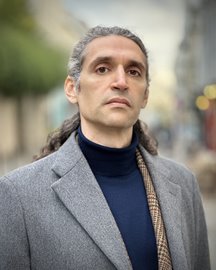Associated Press
31 May, 2020
Police order motorists from their vehicle and to the ground, during a protest on South Washington Avenue, in Minneapolis, Minnesota, USA.
On 25 May, George Floyd, a 46-year-old Black man, died while being arrested by Minneapolis police in Minneapolis, Minnesota, USA. Four days later, Derek Chauvin, the police officer who had been filmed kneeling on Floyd’s neck for more than nine minutes, was charged with murder. A bystander video of the encounter went viral, setting off protests first in Minneapolis and then around the rest of the country. Thousands of people gathered at a makeshift memorial the day after Floyd’s death, where organizers of the rally emphasized keeping the protest peaceful. Although daytime rallies throughout the metropolitan area were mostly peaceful events, nighttime demonstrations escalated into more extreme action, including looting and arson, in which people who were not part of the protest became involved. On 28 May the National Guard was activated. To many, the violence was an understandable response to years of injustice at the hands of the police. In the months that followed, large protests were held in more than 150 American cities, a nationwide call for racial justice not seen since the civil rights protests of the 1960s. Polls taken in June by four different agencies indicate that between 15 million and 26 million people across the US participated in the protests, making it the largest movement in US history. Protests in support of the Black Lives Matter (BLM) movement spread to more than 2,000 cities in some 60 countries worldwide.

John Minchillo
John Minchillo is a staff photojournalist for the Associated Press based in New York City. He joined the Associated Press in 2015 after a freelance career covering crisis and ...